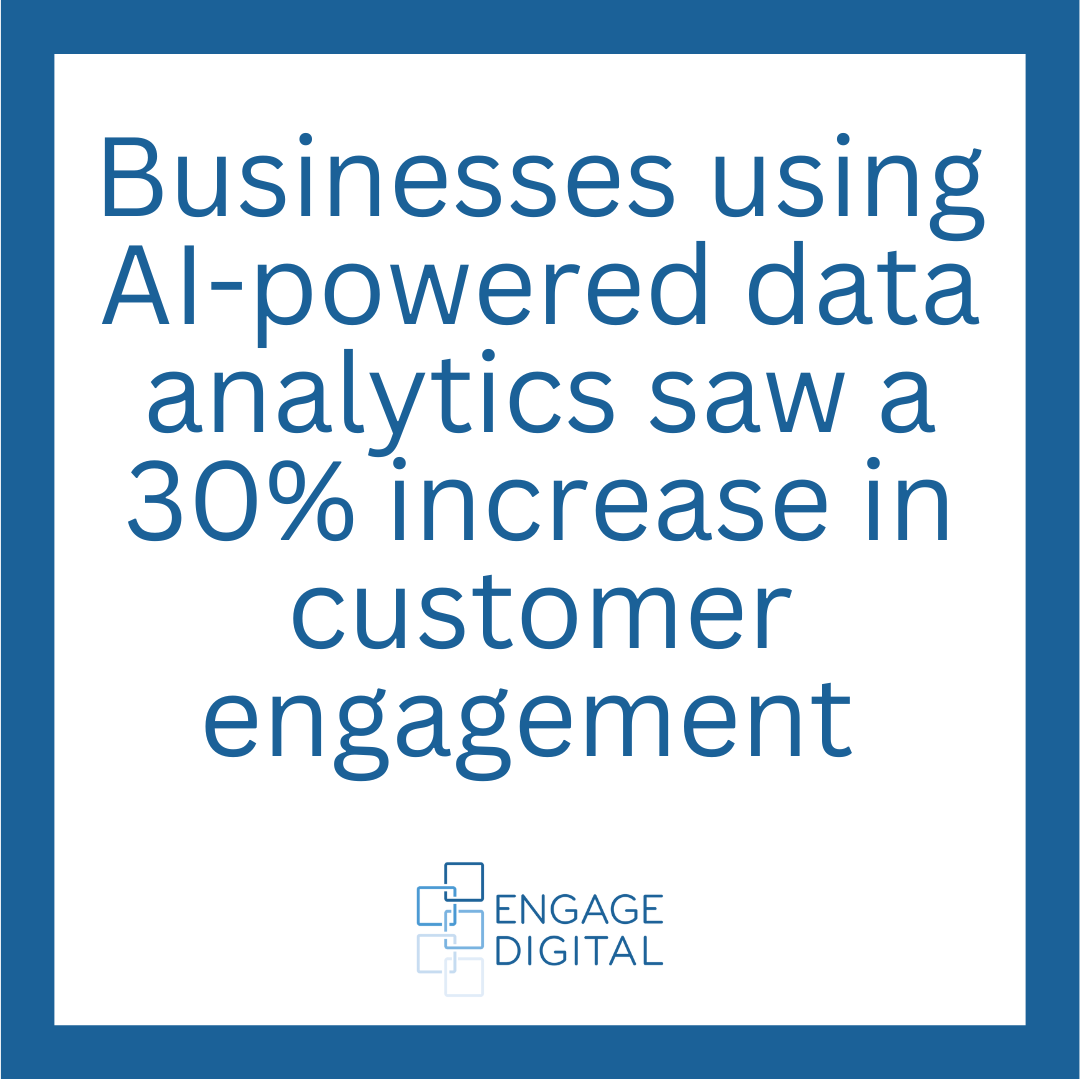As digital privacy regulations tighten and third-party cookies phase out, businesses must shift their focus to first-party data to maintain effective marketing strategies. Unlike third-party data, first-party data is collected directly from customers, making it more reliable, privacy-compliant, and valuable for personalized marketing. A 2024 Acquia CX Trends Report shows that 93% of marketers believe first-party data is critical for long-term business success.
First-party data includes website interactions, purchase history, customer surveys, email subscriptions, and loyalty program insights. By effectively leveraging this data, businesses can improve customer experience, increase engagement, and drive better ROI on marketing efforts. Companies that prioritize this approach build stronger customer relationships and foster brand loyalty. Additionally, first-party data allows for better compliance with evolving privacy laws, giving businesses more control over their marketing strategies without relying on third-party providers.
Strategies for Collecting First-Party Data
Building a strong first-party data strategy requires a combination of direct customer interactions and smart data collection methods. Here are some of the most effective ways to collect and use first-party data:
- Website and App Interactions – Monitor user behavior such as page visits, session duration, and clicks to understand customer interests. Tools like Google Analytics and Heatmaps provide deep insights. Enhancing website forms and interactive elements can encourage more user data collection.
- Surveys and Feedback Forms – Engage customers with surveys that gather insights about their preferences, needs, and buying habits. Offering incentives can improve participation rates and data accuracy. Businesses can also use chatbot surveys for real-time engagement.
- Email and SMS Marketing – Encourage customers to sign up for newsletters or text alerts. Track engagement and tailor content based on user activity. Sending behavior-based emails, such as abandoned cart reminders, boosts conversions.
- Loyalty Programs – Implementing loyalty rewards systems helps businesses collect purchase history and behavioral data while keeping customers engaged. Creating tiered reward systems encourages repeat transactions and increases data collection opportunities.
- Social Media Engagement – Monitoring interactions on social media platforms provides valuable insights into consumer sentiment and preferences. Brands can use polls, interactive posts, and live chat interactions to gather first-party data directly from engaged audiences.
- Event and Webinar Registrations – Hosting digital or in-person events allows businesses to collect customer data through sign-ups and post-event engagement surveys.
Integrating First-Party Data into Omnichannel Marketing
Once collected, first-party data should be seamlessly integrated across multiple marketing channels to create a cohesive customer experience. Here’s how businesses can maximize the impact of their data:
- Personalized Email Marketing – First-party data allows for highly targeted email campaigns. According to HubSpot’s 2024 Email Benchmark Report, personalized emails generate 26% higher open rates than generic ones. Adding personalized subject lines and content boosts customer engagement.
- Social Media Retargeting – Platforms like Facebook, Instagram, and LinkedIn allow businesses to upload customer lists and retarget engaged users with customized ads. By leveraging lookalike audiences, brands can expand their reach effectively.
- Website and E-commerce Personalization – First-party data enables businesses to offer tailored product recommendations, increasing average order value by 20%, according to a 2025 Adobe study. AI-driven recommendation engines can improve conversion rates by predicting customer preferences.
- Offline and In-Store Applications – Brick-and-mortar businesses can use first-party data to offer exclusive in-store promotions, personalize customer service interactions, and optimize inventory management. Retailers integrating digital receipts and customer tracking gain valuable behavioral insights.
- AI-Enhanced Marketing Automation – AI tools can analyze large datasets and trigger personalized marketing actions in real-time. Automating customer journeys leads to higher efficiency and stronger engagement. AI chatbots can provide personalized responses based on first-party data, improving customer interactions.
The Role of AI in Maximizing First-Party Data
 Artificial Intelligence (AI) is essential in enhancing first-party data utilization, but it should not overshadow the fundamental strategies. AI-driven tools help businesses analyze large datasets, predict customer behavior, and automate marketing campaigns for better efficiency. A 2024 McKinsey report found that businesses using AI-powered data analytics saw a 30% increase in customer engagement and a 25% improvement in conversion rates.
Artificial Intelligence (AI) is essential in enhancing first-party data utilization, but it should not overshadow the fundamental strategies. AI-driven tools help businesses analyze large datasets, predict customer behavior, and automate marketing campaigns for better efficiency. A 2024 McKinsey report found that businesses using AI-powered data analytics saw a 30% increase in customer engagement and a 25% improvement in conversion rates.
Machine learning algorithms refine audience segmentation, recommend personalized content, and automate retargeting strategies. AI chatbots and predictive analytics improve customer interactions by anticipating needs and delivering relevant messages at the right time. AI also assists in optimizing ad spend by predicting which campaigns will yield the highest return. AI-driven sentiment analysis can help businesses gauge customer reactions to campaigns and adjust strategies accordingly.
Future Trends in First-Party Data and Digital Marketing
As businesses become more reliant on first-party data, several key trends are shaping the future of digital marketing:
- Customer Data Platforms (CDPs) – More brands are adopting CDPs to unify customer data from multiple sources, ensuring better targeting and more accurate insights.
- Predictive Analytics for Real-Time Decision-Making – AI-driven predictive analytics will help businesses dynamically anticipate customer behavior and optimize marketing strategies.
- Interactive Data Collection – Brands will encourage users to share data through interactive experiences such as gamification, quizzes, and personalized content recommendations. Virtual and augmented reality experiences will also be leveraged for enhanced engagement.
- Privacy-First Marketing: Transparency and ethical data practices will become competitive advantages as consumers demand greater control over their information. Brands focusing on clear opt-in policies and data transparency will foster stronger consumer trust.
- First-Party Data Monetization – Companies are starting to explore ways to monetize their data assets, providing value to partners and advertisers while maintaining compliance. Businesses can offer anonymized data insights to industry partners while adhering to privacy regulations.
- Voice and Chat Data Collection – As smart speakers and AI-driven chatbots gain popularity, brands will leverage these channels to gather insights directly from user interactions. Voice search optimization will play a greater role in digital marketing strategies.
First-Party Data as a Competitive Advantage
As third-party cookies disappear and digital privacy becomes a top priority, first-party data is the key to building stronger customer relationships and driving high-performance marketing strategies. Businesses that invest in data collection methods, omnichannel integration, and AI-driven insights will gain a significant edge in a competitive marketplace.
Rather than seeing privacy regulations as a challenge, brands should embrace the opportunity to engage customers meaningfully and provide more personalized experiences. Marketers who master first-party data strategies will enhance marketing ROI and ensure long-term success in an increasingly privacy-conscious digital landscape.
Companies that fail to leverage first-party data effectively risk falling behind competitors who prioritize data-driven marketing. The future belongs to brands that listen to their customers, respect privacy expectations, and use data ethically to improve the overall consumer experience. Smart, data-led decisions will define marketing success in the years ahead.
First-party data is no longer just an option but an essential pillar of modern marketing success. Businesses that act now and refine their strategies will be well-positioned for sustained growth in a rapidly evolving digital economy.






